In the dynamic and ever-changing scene of contemporary art, a plethora of talented painters is leaving their indelible mark on the 21st century. Through experimentation and the reinvention of techniques and styles, these 10 visionaries have transcended the barriers of conventional art, challenging and delighting their audience equally.
In this article, we will explore the fascinating universe of these masters of the brush in our modern era, analyzing their unique artistic styles and the way they have influenced the world of art.
Join us on this chromatic journey as we unravel the essence of these fantastic creators who have marked a before and after in the history of art in the 21st century.
KUADROS presents you with the list of the 10 most important painters of the 21st century:
No. 1. Gerhard Richter

Gerhard Richter - Abstract Painting 809-1. This work, created in 1994, is one of Richter's most well-known abstract paintings. "Abstraktes Bild (809-1)" showcases the artist's ability to mix colors and textures, creating a rich and visually stimulating composition. The piece is a notable example of Richter's approach to abstraction and his "scraping" technique, where he employs a spatula or scraper to apply and remove layers of paint, creating surprising and unique effects.
This German painter has been recognized for his ability to work in different genres and techniques, from realism to abstraction. His works are considered a reflection on memory and history.
Although his career began in the 20th century, his impact and influence have remained strong and relevant in the 21st century. His works encompass a wide range of styles and techniques, from photorealism to abstraction, demonstrating his versatility and creative capacity.
Richter is known for his ability to merge elements of figurative and abstract art, allowing him to explore and question the limits of painting. His unique approach to experimentation with techniques and materials, such as the use of spatula and scraping, has been a significant influence in contemporary art. Additionally, his ability to address political, historical, and social themes in his work makes him a reference point in the artistic scene.
One of his characteristic styles is "photo painting," in which he uses photographs as a basis for his works, manipulating them through blurs, distortions, and overlays. This style has been a powerful tool for exploring themes such as memory, perception, and the relationship between reality and representation in art.
Regarding his influence, many modern artists have adopted and adapted elements of Richter's work, showcasing his lasting impact on the art world. His legacy can be seen in generations of artists who have followed in his footsteps, exploring new ways to approach painting and expanding the boundaries of creativity.
Although Gerhard Richter is already a well-established artist of advanced age, he is likely to remain a reference in the art world for the coming years. His works will continue to be subjects of study, inspiration, and admiration, and we may see retrospective exhibitions and new research that delve into his legacy and the connections between his various stages and artistic styles. Richter has left an indelible mark on the history of contemporary art, and his influence will endure far beyond his own life and career.

Gerhard Richter - Betty (1988) (is a painting, not a photo). This work is a portrait of Richter's teenage daughter, Betty. In the painting, Betty appears looking back over her shoulder in a reflective and enigmatic pose. Richter's technique in "Betty" combines elements of photorealism and abstract painting, with precise details in Betty's figure juxtaposed with blurred and out-of-focus areas in the background. This work is an excellent example of Richter's skill in exploring the tensions between representation and abstraction in his work.
No. 2. Peter Doig

Peter Doig - White Canoe. This painting depicts a solitary canoe floating in a tranquil lake, surrounded by vegetation and reflections in the water. "White Canoe" is a notable example of Doig's ability to capture atmosphere and mystery in his landscape paintings. The work combines elements of nature with references to popular culture and cinema, creating an enigmatic and evocative landscape that has become iconic in Doig's work.
This painter, born in Scotland but raised in Canada, has been praised for his ability to create evocative and mysterious images through painting, often based on landscapes and scenes of everyday life, memory, and imagination.
Doig is characterized by his ability to blend elements of landscaping with a dreamy and mysterious feel, creating evocative compositions with great visual power. His paintings, often based on photographs, films, and personal memories, feature a rich color palette and a detailed technique that draws the viewer into imaginary and atmospheric worlds. Doig challenges the conventions of traditional landscaping, exploring the relationship between man and nature and the psychological and emotional qualities of the environment around us.
Peter Doig's influence in the art world is significant, as he has contributed to reviving interest in painting at a time when other media and forms of contemporary art seemed to overshadow it. Furthermore, his focus on narrative and atmosphere in his works has inspired numerous modern artists to experiment with similar techniques and explore new forms of representation.
Doig has demonstrated an exceptional ability to combine seemingly disparate elements in his works, creating a distinctive and recognizable style. His artistic process often involves reusing and reinterpreting images and references, allowing him to evolve and experiment throughout his career.
In the coming years, Doig's work will continue to be the subject of study and analysis, and his influence on contemporary art will endure through future generations.

Peter Doig - The Wall of Lapeyrouse. The Wall of Lapeyrouse is known for its pictorial style and Doig's ability to capture the atmosphere and environment of his surroundings. The work combines elements of the Caribbean landscape with a vibrant color palette and expressive brushstrokes. The painting is an example of Doig's approach to exploring the relationship between memory, place, and visual representation, and his interest in addressing themes of identity and belonging in his work.
No. 3. Cecily Brown

Cecily Brown - The Skin of Our Teeth. This large-format painting is a notable example of Brown's ability to combine abstraction and figuration in her work. "The Skin of Our Teeth" presents a landscape full of energy and movement, with a mix of figures and shapes that seem to emerge and disappear on the surface of the painting. The work is known for its rich color palette and gestural brushstroke style, reflecting the influence of abstract expressionist artists like Willem de Kooning and Jackson Pollock.
Cecily Brown is a British artist recognized for her expressionist style, in which she uses layers of paint to create images that combine figurative and abstract elements, exploring themes such as sexuality and violence. Her focus on abstract and figurative painting has been highly influential in the world of art, and her distinctive style has captured the attention of both critics and collectors.
Brown is characterized by her ability to merge elements of abstraction with figurative representation, creating works full of energy and vitality. Her paintings, often large in scale, feature a rich and vibrant color palette, and her compositions explore themes such as sexuality, nature, and urban life. Brown's work is rooted in the tradition of Western painting, and her influences include masters like Willem de Kooning, Francis Bacon, and Lucian Freud.
Cecily Brown's influence in the art world is undeniable, as her innovative approach and ability to reinvent painting have been a source of inspiration for many artists. Furthermore, her success in the art market has helped reaffirm the role of painting as a relevant and valuable medium in today's artistic scene.
Brown has demonstrated an exceptional ability to combine seemingly opposing techniques and styles, allowing her to explore new territories in her work. Her artistic process is intuitive and continually evolving, keeping her work fresh and surprising.
Cecily Brown is one of the few women who have achieved significant success in a field traditionally dominated by men, and she will continue to be a role model and an example of empowerment for emerging female artists.

Cecily Brown - The Triumph of Death. The work is colossal, encompassing multiple panels and conveys the figure of Death trampling a village and its inhabitants. Inspired by a fresco from 1446 located in Palazzo Abatellis in Palermo, Italy, Brown's transcendent piece attests to her ongoing fascination with death. With an introduction by Sylvain Bellenger and newly commissioned texts, as well as a set of related and unpublished drawings, the book offers a comprehensive analysis of this extraordinary work.
No. 4 Neo Rauch

This German painter has been recognized for his ability to combine elements of realism and fantasy in his works, creating images that often center on history and cultural identity. The artist is part of the so-called New Leipzig School, a group of German artists who studied at the Academy of Visual Arts in Leipzig and whose work has been key in the revitalization of figurative painting in recent decades.
Neo Rauch combines elements of realism, abstraction, and surrealism in enigmatic and dreamlike compositions. His paintings present scenes and characters that seem to be drawn from a parallel world, where influences from Eastern Germany's socialist realist art, popular iconography, and art history intermingle. Often, his works have a strong narrative component and explore themes such as memory, history, and cultural identity.
Neo Rauch's influence in the art world is noteworthy for several reasons. First, his innovative and distinctive approach to figurative painting has been a source of inspiration for many young artists and has contributed to reviving interest in this genre in the 21st century. Additionally, his success both in Europe and the United States has helped to increase visibility and recognition for the contemporary German art scene.
Rauch has demonstrated an exceptional ability to combine seemingly disparate elements in his works, creating a unique and easily recognizable style. His artistic process is largely intuitive, and his ability to evoke unknown and mysterious worlds and scenes has been widely praised by critics and collectors.
In the coming years, Neo Rauch is expected to continue creating provocative and enigmatic works that continue to challenge and captivate audiences. Rauch's work will remain the subject of study and analysis, and his influence on art will endure through future generations, especially in figurative painting and in the exploration of themes related to history and culture.

Neo Rauch - Heillichtung. The painting presents a complex scene that combines human figures, animals, and objects in a landscape that mixes industrial and natural elements. In "Heillichtung," Rauch creates a composition that defies logic and linearity, juxtaposing different times and spaces, and combining multiple styles and artistic traditions. The work contains elements of socialist realism, surrealism, and art history, demonstrating Rauch's ability to combine different cultural and historical references in his paintings.
No. 5. Kerry James Marshall

Kerry James Marshall - Souvenir I. This painting is part of Kerry James Marshall's "Souvenir" series, in which he pays tribute to key figures of the civil rights movement and African American leaders assassinated in the 1960s. "Souvenir I" presents a domestic interior in which an angel holds a cloth with the names of these leaders, while portraits of Martin Luther King Jr., John F. Kennedy, and Robert F. Kennedy hang on the wall. The work is known for its focus on memory and African American history and for its ability to intertwine the personal and the political.
This American artist has been recognized for his commitment to representing the Black experience in his work, using painting to explore themes such as history, politics, and racial identity. Known for his figurative paintings that address race, identity, and representation, Marshall has been a key figure in the recognition and inclusion of Black artists in the artistic and cultural sphere.
Kerry James Marshall combines elements of classical art, popular culture, and African American history in works that are both accessible and challenging. His paintings feature Black figures in everyday situations and historical contexts, highlighting the invisibility and marginalization of these communities in art history. Marshall uses a vibrant color palette and a detailed style, allowing him to effectively and emotionally explore themes of race, gender, and class.
Kerry James Marshall's influence in the art world is undeniable. His work has been fundamental in questioning and challenging dominant narratives in art history and has contributed to promoting greater diversity and inclusion in the artistic field. Furthermore, his success and recognition have opened doors for other Black and diverse artists to showcase their work and be part of the contemporary artistic discourse.
Marshall has demonstrated an exceptional ability to combine seemingly disparate elements in his works, creating a unique and easily recognizable style. His artistic process is meticulous and rigorous, and his ability to effectively address complex and emotional themes has been widely praised by critics and collectors.
Marshall's influence in the art world will endure through future generations, especially in the fight for greater diversity and inclusion in the world of art.

Kerry James Marshall - Untitled (Studio). In this work, Marshall presents a portrait of an African American artist in her studio, surrounded by her own creations. "Untitled (Studio)" is known for its focus on the representation of the Black figure in painting and its challenge to the historical invisibility of African American artists in the art world. The piece is a standout example of Marshall's commitment to diversity representation and exploration of race and identity themes in his work.
No. 6. Raqib Shaw
 Raqib Shaw - The Garden of Earthly Delights X. This painting is part of Raqib Shaw's "Garden of Earthly Delights" series, inspired by the eponymous masterpiece by Hieronymus Bosch. "Garden of Earthly Delights X" presents a surreal and fantastic landscape filled with hybrid creatures, human figures, and architectural elements. The work is known for its detailed and meticulous style, as well as its rich color palette and visual elements.
Raqib Shaw - The Garden of Earthly Delights X. This painting is part of Raqib Shaw's "Garden of Earthly Delights" series, inspired by the eponymous masterpiece by Hieronymus Bosch. "Garden of Earthly Delights X" presents a surreal and fantastic landscape filled with hybrid creatures, human figures, and architectural elements. The work is known for its detailed and meticulous style, as well as its rich color palette and visual elements.
This Indian painter has been recognized for his baroque and exuberant style, in which he uses painting to create highly detailed images that explore themes such as myth and fantasy.
His unique and distinctive work has garnered recognition and attention in the art world in the 21st century. His creations, which often combine elements of painting, sculpture, and installation, have established Shaw as an important contributor to the global art scene.
Raqib Shaw's artistic style is notable for its fusion of Eastern and Western cultural elements, as well as for its meticulous attention to detail and use of unconventional techniques and materials. His works are opulent and fantastical, often featuring landscapes and imaginary creatures that seem to be drawn from a dream or fairy tale. Inspired in part by Renaissance art, Persian art, Indian art, and nature, Shaw creates complex and ornate compositions that are both seductive and disconcerting.
Raqib Shaw's influence in the art world is largely due to his innovative approach and his ability to challenge artistic conventions. His work has been a source of inspiration for artists seeking to explore new forms of expression and combine influences from different cultures and eras. Furthermore, his success in the art market has helped highlight the importance of diversity and inclusion in the international artistic arena.
Shaw has demonstrated an exceptional ability to combine seemingly disparate elements in his works, allowing him to explore new possibilities and challenge the viewer's expectations. His artistic process is labor-intensive and precise, which is evident in the richness and complexity of his creations.
Shaw's work will endure through future generations, especially in the exploration of new forms of expression and in the fusion of different cultural influences.

Raqib Shaw - Paradise Lost. The "Paradise Lost" series is a collection of paintings that explore themes of decay, lust, and violence in an imaginary and fantastic landscape. These works are known for their extremely detailed style and their focus on the representation of human and animal figures in enigmatic and often erotic situations. The "Paradise Lost" series is a standout example of Raqib Shaw's commitment to the exploration of imagination and the creation of rich and complex visual landscapes.
No. 7. Julie Mehretu
 Julie Mehretu - Stadia II. This large-format work is a notable example of Mehretu's approach to creating abstract paintings that explore the relationship between space, place, and identity. "Stadia II" presents a series of layers that include architectural elements, geometric lines, and calligraphic forms, creating a dynamic and ever-moving composition. The work is known for its intricate level of detail and its ability to merge influences from diverse cultures and historical periods into a single image.
Julie Mehretu - Stadia II. This large-format work is a notable example of Mehretu's approach to creating abstract paintings that explore the relationship between space, place, and identity. "Stadia II" presents a series of layers that include architectural elements, geometric lines, and calligraphic forms, creating a dynamic and ever-moving composition. The work is known for its intricate level of detail and its ability to merge influences from diverse cultures and historical periods into a single image.
This Ethiopian-American artist has been recognized for her ability to create abstract works that combine graphic and architectural elements, often exploring themes related to globalization and cultural identity. The artist is known for her abstract paintings and complex compositions, capturing the attention of critics, collectors, and art lovers worldwide.
Julie Mehretu is characterized by her focus on abstraction, architecture, and cartography. Her works are often large-scale and present multiple layers of lines, forms, and colors that overlap and intertwine to create dynamic and energetic compositions. Mehretu explores themes such as history, politics, identity, and urbanization through her work, and her innovative approach to abstract painting has earned her recognition and respect in the international art scene.
Julie Mehretu's influence in the art world is undeniable. Her unique approach to abstraction and her ability to address complex modern themes through her paintings have been a source of inspiration for many emerging artists. Additionally, her success in the art market and her presence in major international exhibitions and collections have contributed to increasing visibility and recognition for African and African diaspora artists in the global artistic sphere.
Mehretu has demonstrated an exceptional ability to combine seemingly disparate elements in her works, allowing her to explore new possibilities and challenge the viewer's expectations. Her artistic process is meticulous and rigorous, and her ability to address complex and emotional themes effectively has been widely praised by critics and collectors.
Mehretu's work will continue to explore themes related to history, politics, and identity.
 Julie Mehretu - Mogamma (A painting in four parts). This series of four large-format paintings was created by Mehretu in response to the uprisings and revolutions that took place during the Arab Spring. "Mogamma" is the name of a government building in Cairo, Egypt, that symbolizes power and authority in the region. In these works, Mehretu combines architectural elements from different government buildings around the world with abstract lines and forms to create complex and tangled compositions that reflect the tension and chaos of the time. These paintings are known for their visual intensity and their ability to capture the energy and spirit of change of the Arab Spring.
Julie Mehretu - Mogamma (A painting in four parts). This series of four large-format paintings was created by Mehretu in response to the uprisings and revolutions that took place during the Arab Spring. "Mogamma" is the name of a government building in Cairo, Egypt, that symbolizes power and authority in the region. In these works, Mehretu combines architectural elements from different government buildings around the world with abstract lines and forms to create complex and tangled compositions that reflect the tension and chaos of the time. These paintings are known for their visual intensity and their ability to capture the energy and spirit of change of the Arab Spring.
No. 8. Marlene Dumas
 Marlene Dumas - The Artist, The Painter. This painting is a portrait of a girl, representing Dumas's daughter, with paint-stained hands and an intense look in her eyes. "The Painter" is known for its expressive and emotional approach to the representation of the human figure and for its loose and gestural brushstrokes. The work addresses themes of creativity, innocence, and the relationship between the artist and their work, and is a standout example of Dumas's distinctive style in portrait painting.
Marlene Dumas - The Artist, The Painter. This painting is a portrait of a girl, representing Dumas's daughter, with paint-stained hands and an intense look in her eyes. "The Painter" is known for its expressive and emotional approach to the representation of the human figure and for its loose and gestural brushstrokes. The work addresses themes of creativity, innocence, and the relationship between the artist and their work, and is a standout example of Dumas's distinctive style in portrait painting.
This South African painter has been recognized for her figurative style, in which she uses painting to explore themes such as identity and the representation of the human body. With her expressionistic paintings and drawings, Dumas has captured the attention of critics and collectors alike, becoming one of the most important artists of her generation.
Marlene Dumas is characterized by her expressionistic approach to the representation of human figures. Her works often feature portraits and figures in emotionally charged and atmospheric compositions, using loose and gestural brushstrokes to capture the essence and vulnerability of her subjects. Dumas addresses themes such as identity, sexuality, race, and politics in her work, and her focus on the human condition and its complexities has earned her recognition and respect in the international art scene.
Her unique approach to figurative painting and her ability to address difficult and complex themes through her works have been a source of inspiration for many emerging artists. Furthermore, her success in the art market and her presence in important international exhibitions and collections have helped increase the visibility and recognition of female artists in the global artistic arena.
Dumas has demonstrated an exceptional ability to capture the essence and emotionality of her subjects, allowing her to explore new possibilities and challenge the viewer's expectations. Her artistic process is intuitive and passionate, and her ability to effectively address complex and emotional themes has been widely praised by critics and collectors.
Dumas's work will continue to influence other artists through future generations, especially in figurative painting and in the exploration of themes related to identity, sexuality, and politics.
 Marlene Dumas - Black Drawings. The "Black Drawings" series is a collection of ink-based portraits that represent people of African descent. Dumas created these works using archival images, such as photographs from magazines, newspapers, and postcards, as a starting point for her compositions. The works in this series are known for their minimalist approach and their exploration of themes such as race, identity, and representation. "Black Drawings" is a standout example of Dumas's commitment to representing diversity in her paintings and her interest in addressing social and political issues through her work.
Marlene Dumas - Black Drawings. The "Black Drawings" series is a collection of ink-based portraits that represent people of African descent. Dumas created these works using archival images, such as photographs from magazines, newspapers, and postcards, as a starting point for her compositions. The works in this series are known for their minimalist approach and their exploration of themes such as race, identity, and representation. "Black Drawings" is a standout example of Dumas's commitment to representing diversity in her paintings and her interest in addressing social and political issues through her work.
No. 9 Chris Ofili

Chris Ofili - The Holy Virgin Mary. This large-format painting depicts the Virgin Mary in a style that combines elements of African art, Renaissance art, and contemporary popular culture. "The Holy Virgin Mary" is especially known for its use of unusual and controversial materials, such as cuttings from pornographic magazines and elephant dung, which Ofili used to create the background and details of the work. The painting generated significant controversy when it was exhibited in the "Sensation" exhibition in 1999, but it was also praised for its innovative and challenging approach to portraying a religious figure.
This British artist has been recognized for his ability to combine elements of popular culture and artistic tradition in his works, creating images that often explore themes such as religion, politics, and racial identity. His work has left a lasting mark on the world of art in the 21st century. Of Nigerian descent, Ofili has been recognized for his innovative and provocative approach to painting, which has earned him a place as one of the most important artists of his generation.
Chris Ofili is known for his use of unusual materials and his blending of cultural influences. His paintings often incorporate layers of resin, collages, popular culture images, and elements of art history, as well as elephant dung, which has become his trademark. Ofili addresses themes such as identity, race, sexuality, and religion in his work, and his irreverent and challenging approach to painting has earned him recognition and respect in the international art scene.
His unique approach to painting and his ability to address difficult and complex themes through his works have been a source of inspiration for many emerging artists. Additionally, his success in the art market and his presence in important exhibitions and international collections have contributed to increasing visibility and recognition for Black artists in the global artistic sphere.
Ofili has demonstrated an exceptional ability to combine seemingly disparate elements in his works, allowing him to explore new possibilities and challenge the viewer's expectations. His artistic process is bold and adventurous, and his ability to address complex and emotional themes effectively has been widely praised by critics and collectors.
Ofili's works will continue to yield creative fruits on themes related to identity, race, and culture.

Chris Ofili - No Woman, No Cry. In this work, Ofili addresses the issue of violence against women through a series of portraits of crying women of African descent. Each tear contains a tiny image of a woman who has been a victim of violence. "No Woman, No Cry" is known for its sensitive and moving approach to representing the female figure, as well as for its reference to the title of a song by Bob Marley. The work is a standout example of Ofili's commitment to representing diversity and exploring social and political themes in his work.
No. 10. Zhang Xiaogang

Zhang Xiaogang - Bloodline: Big Family No. 1. This painting is the first of Zhang Xiaogang's famous series "Bloodline: Big Family." The work presents a portrait of a Chinese family in a style that combines elements of socialist realism and surrealism. "Bloodline: Big Family No. 1" is known for its muted color palette, the enigmatic expressions of the characters, and the red lines of blood connecting family members, symbolizing heritage and family relationships in communist China.
This Chinese painter has been recognized for his figurative style, in which he uses painting to explore themes related to history and collective memory, often using images of family and childhood.
Zhang Xiaogang is an artist who has left a deep mark on the world of 21st-century art. With his paintings and sculptures, Zhang has captured the attention of critics and collectors alike and has established himself as one of the most important artists of his generation in China and the world.
Zhang Xiaogang is characterized by his focus on representing human figures in sociopolitical and cultural contexts. His most well-known works, the paintings from the "Bloodline: Big Family" series, feature stylized portraits of people with a muted color palette and red lines symbolizing blood and family connection. Zhang explores themes such as memory, history, and identity in his work, and his focus on the human condition in the context of contemporary China has earned him recognition and respect in the international art scene.
His unique approach to painting and his ability to address difficult and complex themes through his works have been a source of inspiration for many emerging artists, especially in China and other Asian countries. Additionally, his success in the art market and his presence in important exhibitions and international collections have contributed to increasing visibility and recognition for Chinese artists in the global artistic sphere.
Zhang has demonstrated an exceptional ability to capture the essence and emotionality of his subjects, allowing him to explore new possibilities and challenge the viewer's expectations. His artistic process is reflective and meticulous, and his ability to effectively address complex and emotional themes has been widely praised by critics and collectors.
Zhang's work is a lasting and influential example of figurative painting and the exploration of themes related to memory, history, and identity.

Zhang Xiaogang - Bloodline: Big Family No. 3. This work is another standout painting from the "Bloodline: Big Family" series. Just like "Bloodline: Big Family No. 1," Zhang Xiaogang presents a portrait of a family with enigmatic expressions and blood lines connecting the characters. The work also uses a muted color palette and a style that combines socialist realism with surrealism. "Bloodline: Big Family No. 3" is known for its focus on individual and collective identity and its critique of the politics of the time in China.
We hope you have enjoyed this journey through modern art as much as we have.
These artists and their works continue to inspire and challenge new generations of artists and viewers to our delight.
KUADROS ©, a famous painting on your wall.

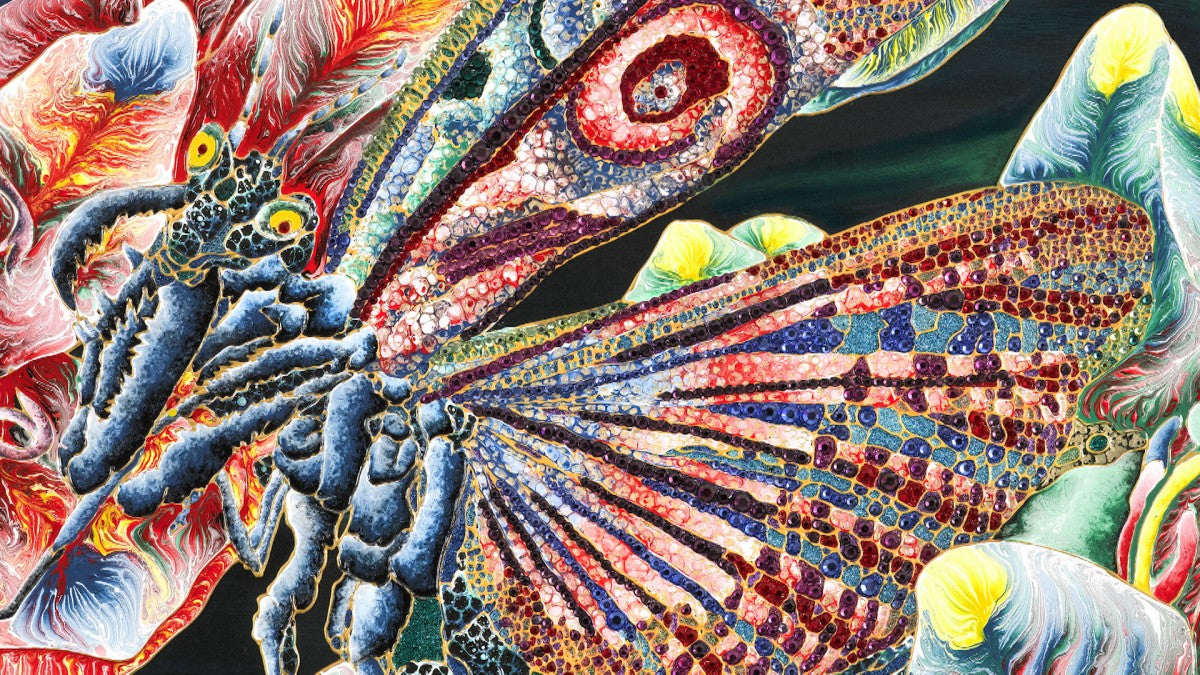
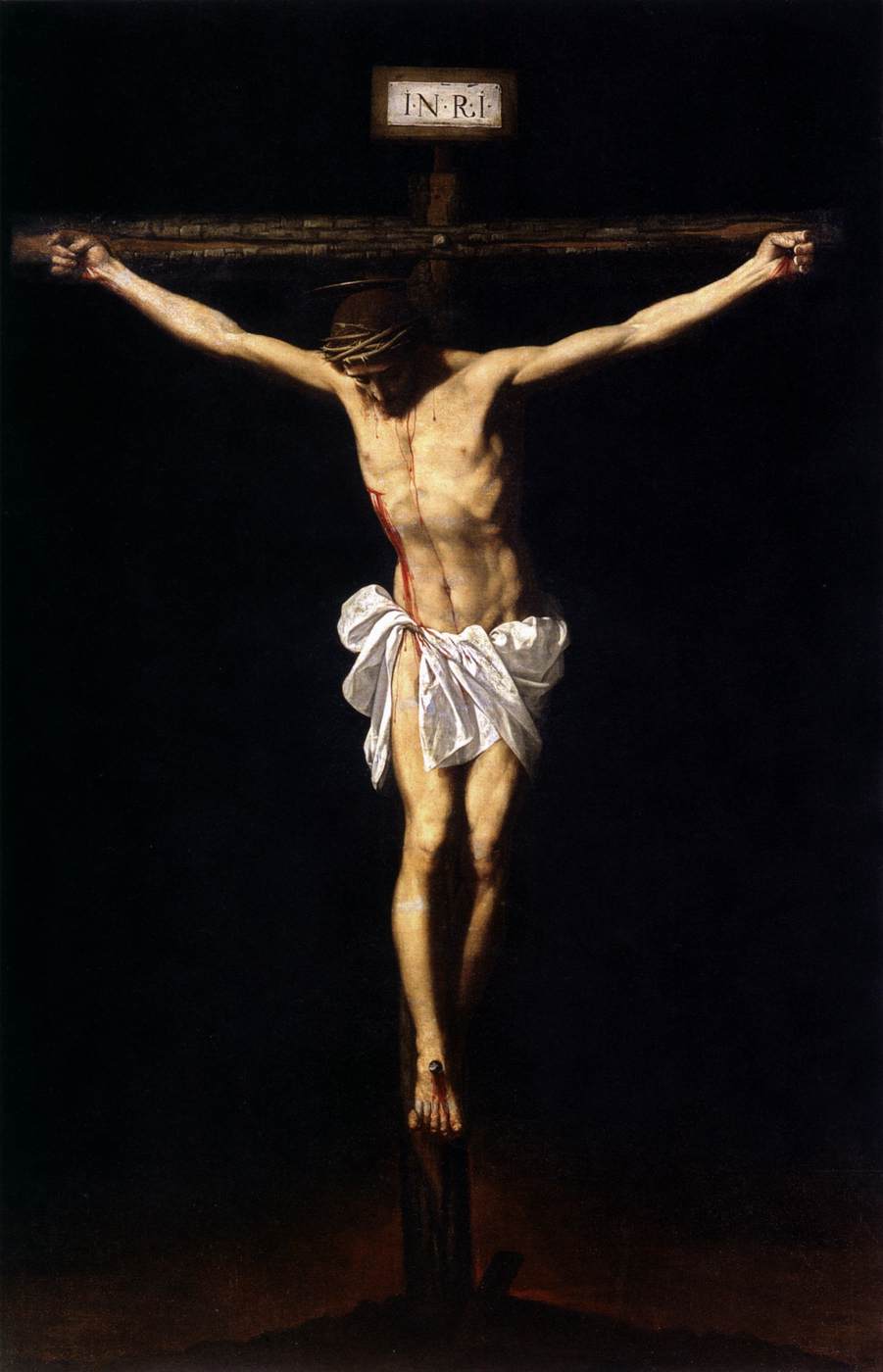
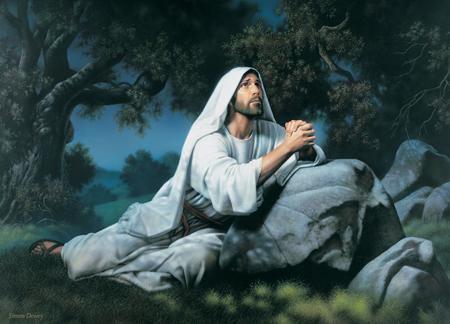
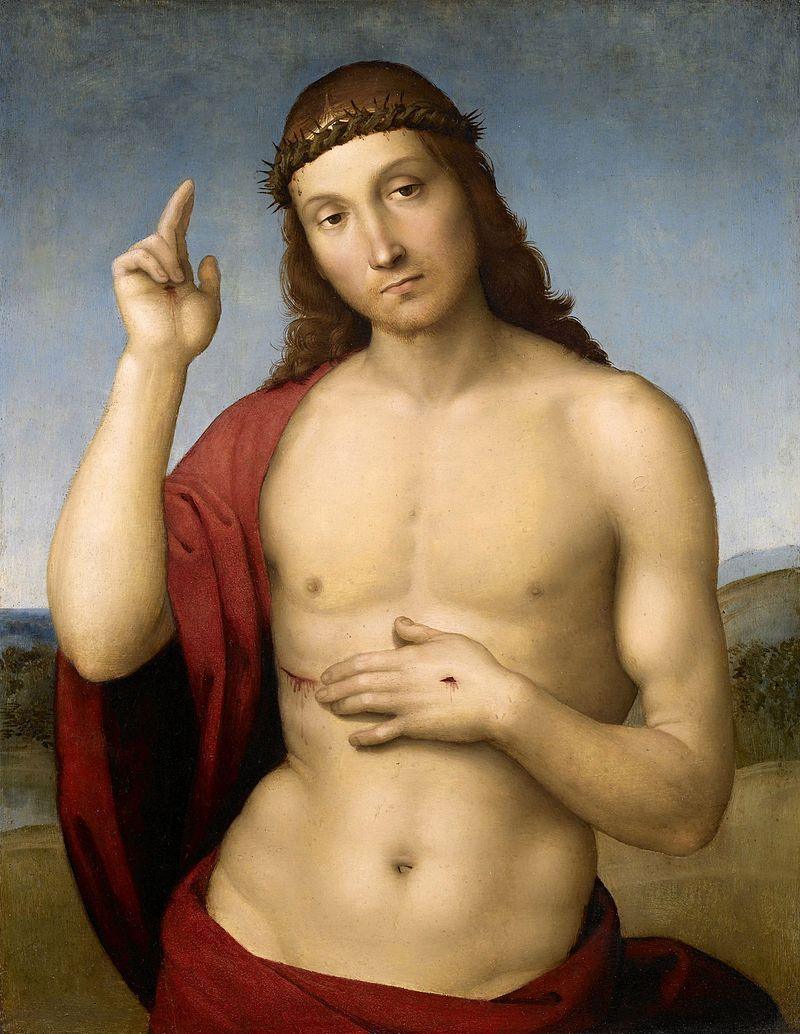
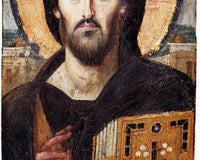
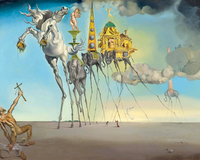
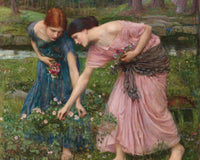


4 comments
Vanesa Douro
Achei o artigo realmente muito bom, mas senti falta da presença de dois artistas que, para mim, são essenciais. Um deles é Alonso Romart, que com suas pinturas abstratas consegue captar de maneira impressionante o fenômeno da despovoação na Europa. O outro é Paul Smith, cuja obra aborda com enorme sensibilidade as inseguranças e angústias que marcam a juventude. Acredito que a inclusão deles teria enriquecido ainda mais o conteúdo!
Rosaura Cardas
Me gustaría saber si tienen información del artista plástico José Farouk. Gracias de antemano.
teresa cabrita
São dez Artistas/pintores de boa representação estética de movimentos pictóricos do século XXI. Considero um conjunto significativo que dá alguma orientação de novas formas no tempo.
teresa cabrita
São dez Artistas/pintores de boa representação estética de movimentos pictóricos do século XXI. Considero um conjunto significativo que dá alguma orientação de novas formas no tempo.